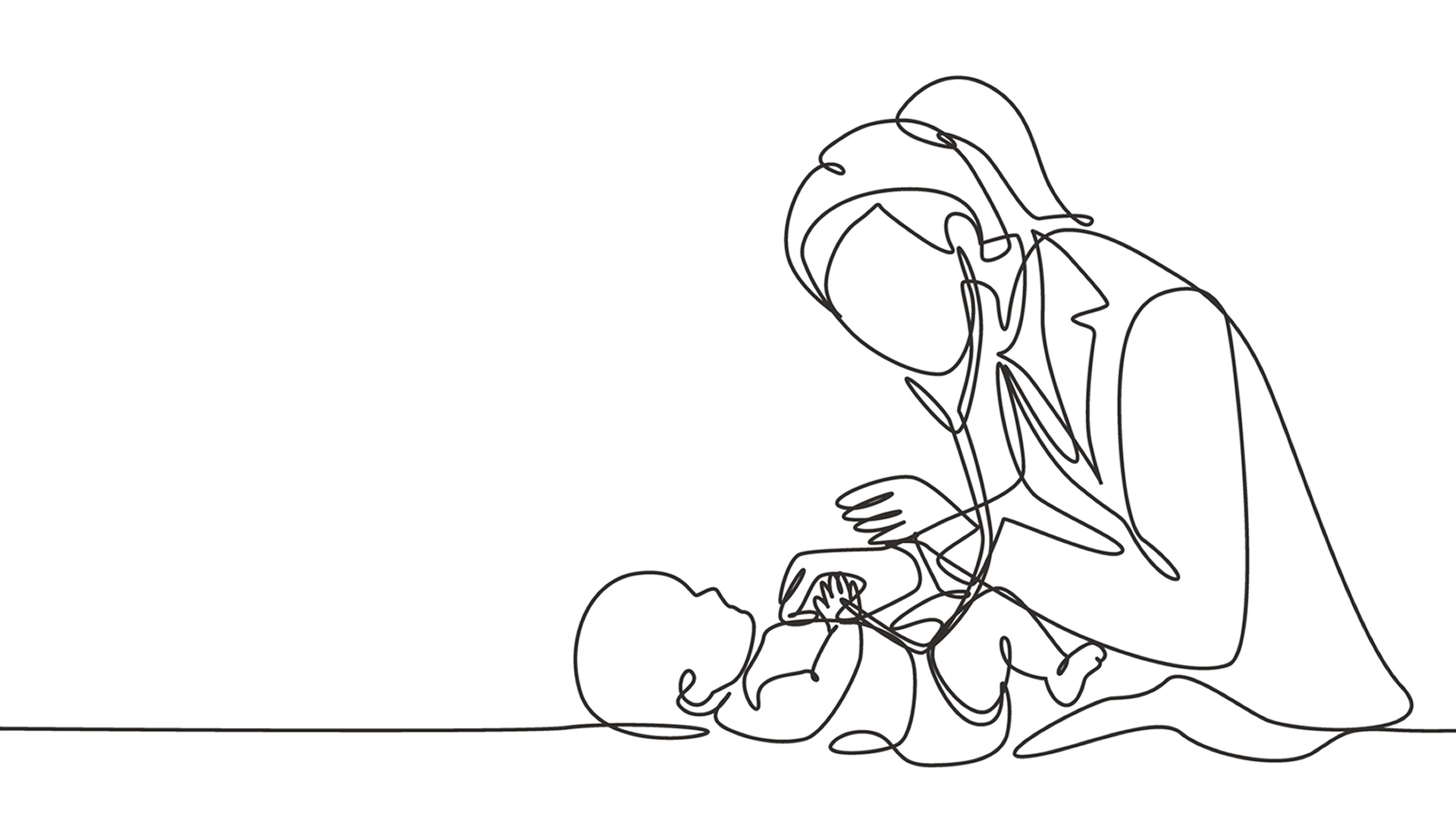Medical Necessity to Life’s Mission: A Mother’s Motivation Drives Nursing Innovation
JUST DO IT! The problems are everywhere, and nurses are in the best position to identify those needs.
Lori Irvin, BSN, RN, CPN
What was the impetus for your work or innovation?
My youngest daughter, Rosemary, was diagnosed in utero with a critical congenital heart defect called Hypoplastic Left Heart Syndrome (HLHS). She has had five open-heart surgeries and numerous catheterizations and procedures. We were in the hospital for over fifteen months during the first two and a half years of her life. In between her third and fourth open-heart surgeries, we lived at Children's National Hospital for nearly six months. At one point, we were preparing to go home on hospice. During that time in the hospital, she was constantly pulling at everything she was connected to, and frequently disconnected herself from a variety of lines, tubes, and drains. This became an immense frustration for me and was ultimately my motivation to create a solution.
After Rosemary recovered from her surgeries, I decided to go back to nursing school. I knew she would eventually need a heart transplant, and a higher level of care and advocacy. I graduated from a community college with an associate degree in nursing and worked as an adult telemetry nurse at a local hospital. I chose to work weekend shifts so I could pursue my bachelor’s degree in nursing.
When I graduated, my goal was to get back to the place that saved my daughter’s life. I began my career at Children’s National Hospital in 2017 as an Intestinal Rehabilitation Nurse. That unit is designated for children who need nutritional optimization. Most of the patients have long-term intravenous access (Broviacs, PICCs, etc.), feeding tubes, ostomies, and a variety of other lines, tubes, and drains. After a few months there, I realized that many unsupervised children frequently disconnect themselves the way my daughter did. I was curious if this was just happening on our unit, or if this was a more common problem for nursing in general. I discovered it is in fact more common than I originally thought.
What problem are you trying to solve?
Unsupervised adult and pediatric patients are often left alone for a multitude of reasons in a variety of settings. If they become confused or curious about their environment, they may purposefully or unintentionally disconnect themselves from their lines, tubes, and drains. When this happens, it may be some time before a nurse or caregiver recognizes the disconnection. This can lead to a number of negative outcomes including CLABSIs, loss of IV fluids and medications, and electrolyte and fluid imbalance, which contribute to an increased length in hospital stay and increase costs to both the hospital and the patient.
In July 2020, I was given the opportunity to pitch my idea to the Children’s National Biodesign Program and our Shared Nursing Leadership Research & Innovation Council, which support nurse-led and clinician-based innovations. My idea for the Connector Protectors was chosen as one of our quality improvement projects.
In March 2021, we sent out a survey to the nurses at Children’s National. Based on our survey response from 197 nurses, over 87% said they have experienced feeding tube disconnections and over 84% of nurses reported they had experienced intravenous disconnections at least 25% of their patient-facing time. This significant response fueled our development of a valuable solution.
How is this work innovative and necessary for the nursing profession?
Protecting patients’ lines, tubes, and drains is a top priority because they are the most effective way to deliver life-saving therapeutic treatments and monitor patients’ clinical outcomes and progress. For decades, we have resorted to taping lines together, taping them on patients’ clothing, and doing our best to hide them in order to deter disconnection. With the Connector Protectors, you can securely place your connection points into the device. Our novel closure mechanism is difficult for children to open, but easy for the trained user. Our aim is to make the connection points tamper-resistant and provide peace of mind when leaving a patient alone.
What advice did you receive that really helped you? What advice do you have to offer?
JUST DO IT! The problems are everywhere, and nurses are in the best position to identify those needs.
- Write down the problem.
- Sketch out an idea or describe your solution.
- Write your name and date on it. This is your first prototype!
- Seek legal advice early. Check with your institution to see if they have an intellectual property policy.
- Follow other nurse innovators on LinkedIn and ask a ton of questions. It’s the easiest way to learn and grow. Read as much about innovation as possible.
- Learn how to develop a pitch deck. Get comfortable being uncomfortable. The more you put yourself out there, the more experience you get delivering your idea.
- Have fun!










